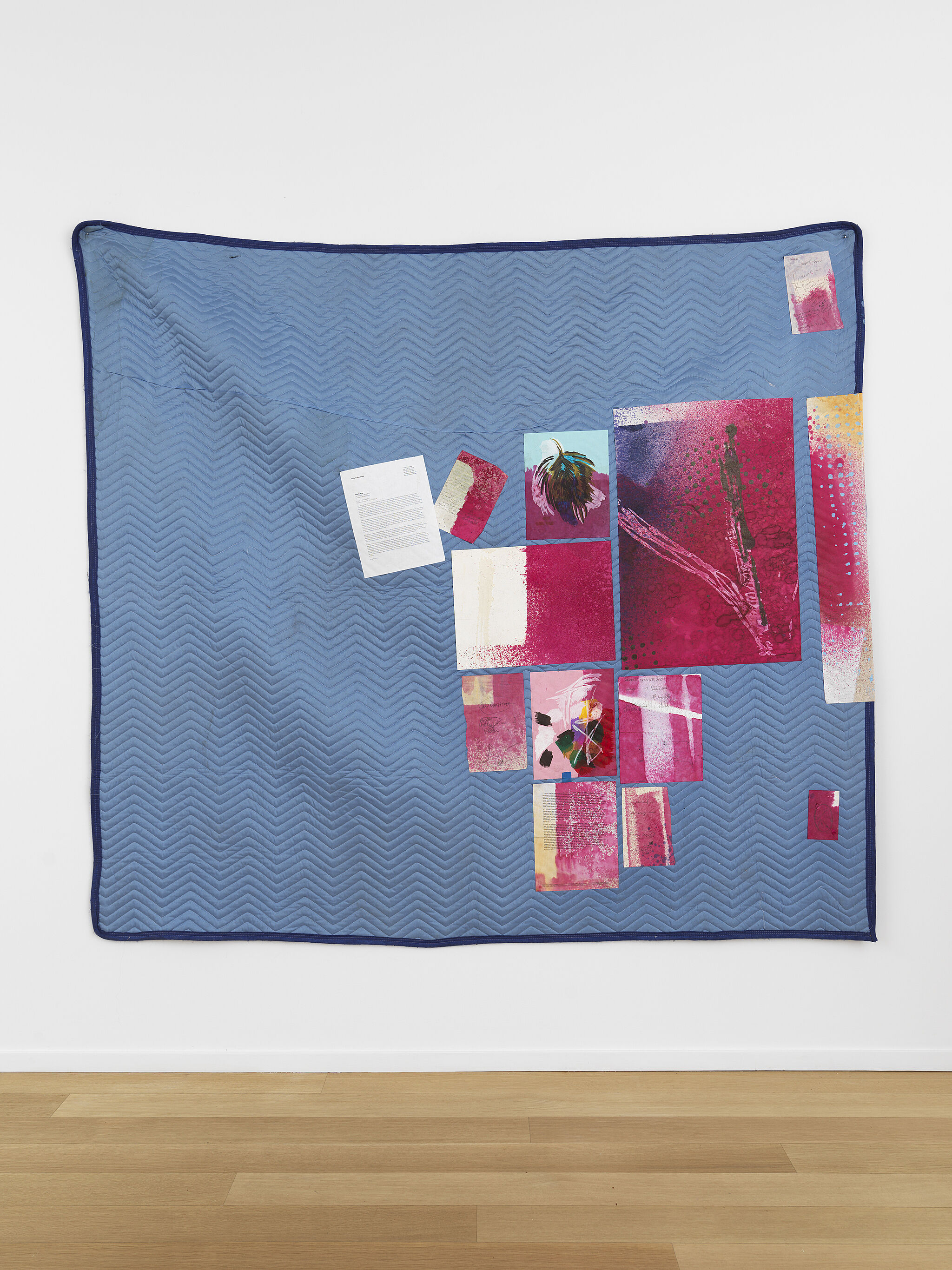Whitney Biennial 2019 | Art & Artists
May 17–Oct 27, 2019
Whitney Biennial 2019 | Art & Artists
Eric N. Mack
46
Floor 5
Born 1987 in Columbia, MD
Lives in New York, NY
Eric N. Mack’s works maximize the qualities of fabric—its opacity, color, and texture—to create works that combine elements of painting and sculpture.
In (Easter) The Spring/Holy Ground he collaged a group of texts and drawings onto a moving blanket to which he has attributed the qualities “softness, protection, [and] warmth.” Similarly poetic associations may extend to a constellation of items within the work, such as the press release for a gallery show by Alvin Baltrop, who made intimate photographs of Manhattan’s West Side piers (across from what is now the Whitney’s current location) while working as a mover and living nearby in his van. Mack seems to imply a link between the protective spirit of the blanket and his recuperative gesture toward the vulnerable and overlooked legacy of Baltrop’s life and work.
(Easter) The Spring / The Holy Ground, 2018
-
0:00
Eric N. Mack
0:00
Eric N. Mack: My name is Eric N. Mack.
Narrator: For the Biennial, Mack produced a large-scale, site specific work.
Eric N. Mack: The work is a fabric collage made out of an assortment of materials, mostly materials that would be considered textiles sewn together in a composition that would then extend into the space of the gallery. A large amount of the textiles will be transparent. It's going to be very much a way of looking through and experiencing the space. But also, offering a surface for consideration as well. A gauzy, organza, or a transparent charmeuse that's taut, would then become a lens in a way, a fragmented lens that would allow you to experience the rest of the room, in a sense.
I'm going to be in a room alongside my friend, Jennifer Packer. We've shared a studio for the past few years. She's in my head, in a way. There's that natural conversation that's been there for a while. Our practices are very different just in the ways that there's a division between certain rules of representation and certain rules about abstraction. I think we both break them in very different ways. But yeah, there's going to be some interesting, I think, overlap as well as affirmations.

